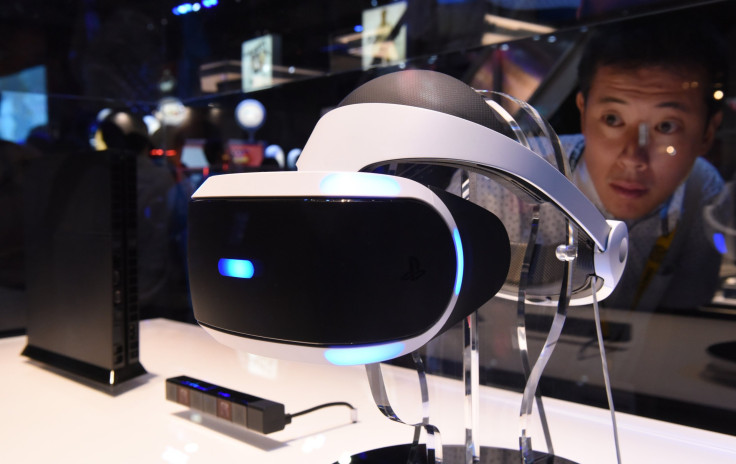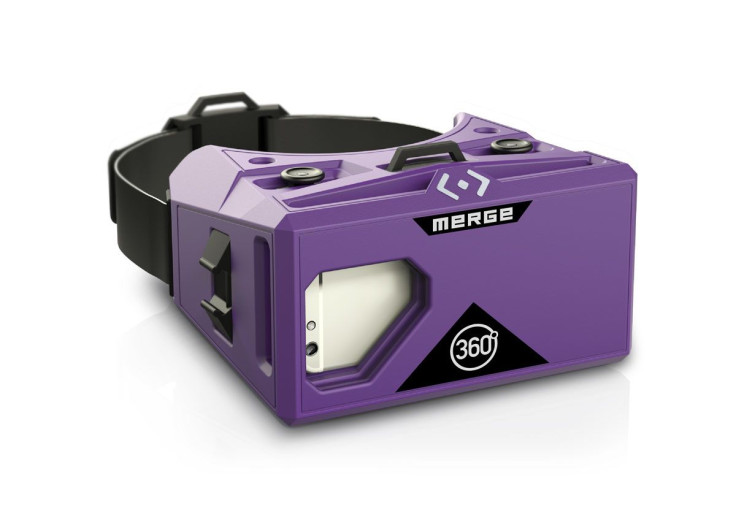Virtual Reality In CES 2016 Spotlight As Sony, HTC And Facebook’s Oculus Show Off VR Gear, Content

LAS VEGAS — Consider 2016 the year virtual reality finally arrives. Led by the likes of Sony, HTC and Facebook’s Oculus VR, the technology will become available to general consumers later this year, but not before taking center stage at this week’s 2016 Consumer Electronics Show.
Here, tech firms will be showcasing all the virtual reality content they’ve been cooking up, ranging from immersive games that encapsulate players in 360-degree environments to short-length, live-action movies and even real-time video streams from live sports.
While Silicon Valley has been working on virtual reality since Oculus VR’s 2012 Kickstarter campaign, the industry has largely refrained from making any major consumer releases. Instead, the tech world has been patiently improving the technology and building out the content that will be available to consumers. But in 2016, the Oculus Rift, PlayStation VR and HTC Vive headsets will all go on sale.
That’s why virtual reality makers are coming to the desert to show what this new medium has to offer and prove to consumers that virtual reality is worth both their time and, more importantly, their money. And already, there are numerous pieces of content, ranging from video games to so-called virtual reality experiences, awaiting eager users, experts say.
“This is the beginning of an explosion of content,” said Mike Rothenberg, CEO of Rothenberg Ventures, a venture capital firm focused on virtual reality. “This is the first inning. Everything else has just been warmup.”
Leading the way will be gaming, with dozens of premium titles slated to be released throughout 2016. Among them will be “Lucky’s Tale,” an adventure video game set in a cartoon world that stars a blue-caped fox named Lucky, which will be included for free with every unit of the Oculus Rift sold upon the headset’s release in the first quarter. Presales for the device, which also include the game "EVE: Valkyrie," will kick off Wednesday at 11 a.m. EST, Oculus VR announced Monday.
“That game is VR’s answer to ‘Mario 64.’ What the VR industry is trying to show people is familiar concepts, familiar ideas,” said market-watcher Cris Miranda. “It’s sort of like ‘Here’s something you’re familiar with — ‘Mario 64’ — but with VR. Here’s how you can do it better.'”
Beyond cartoon foxes, the virtual reality industry has many other types of games planned, including first-person shooters, action games set in outer space and even a virtual reality version of "Rock Band."
“Gaming is going to be the tip of the spear that ushers VR into the mainstream,” said Ikrima Elhassan, co-founder of Kite & Lightning, a studio that's currently developing "Bebylon Battle Royale," a virtual reality game set to go on sale this summer that pits tatted-up babies against each other in a post-apocalyptic world. “Because VR is so new, people are willing to experiment and try new things that traditional games might not have done.”
Unfortunately for casual gamers, the barrier to premium virtual reality gaming will be high, with the Oculus Rift, PlayStation VR and HTC Vive all expected to cost well into the hundreds of dollars and require a desktop or game console to connect to.
Not Just the Next Game Boy
For those who would rather try on VR before paying hundreds of dollars, there are mobile headsets. These headsets are powered by smartphones and therefore offer less computing power, but they are quite inexpensive. Google Cardboard, for example, can be built using materials around the house, or you can buy a simple kit for a couple of dollars. The Samsung Gear VR, meanwhile, offers a little more power but is still relatively inexpensive at $99.
Though less powerful, these headsets offer curious consumers a low-cost entry into the world of virtual reality. “Most people have smartphones and not large desktop gaming computers,” said Brooke Linville, CEO of IonVR, a mobile VR headset maker that will exhibit at CES. Smartphones are “where we can meet consumers.”
Though mobile headsets are not capable of rendering complex video games or streaming live video, they’re great for playing simpler games; watching pre-recorded 360-degree videos; or going on virtual reality experiences, such as a tour of a college campus. “This isn’t just the next Game Boy. This is something bigger,” said Andrew Trickett, co-founder of Merge VR, which makes a $99 headset that’s compatible with both the iPhone and Android smartphones. “This is the next great digital platform.”

Many in the virtual reality market are hoping 2016 will see as many of these low-cost headsets into the hands of consumers as possible, molding those users into potential customers of more powerful headsets down the road. “2016 will be a really good year to start to condition the market,” said Jefferson Wang, a senior partner at IBB Consulting. Wang said content like Gatorade’s “360-Degree Bryce Harper Virtual Reality Experience,” Facebook's 360-degree video of "Star Wars: The Force Awakens" and content like the New York Times' VR app make the medium interesting to those who are not early adopters.
Already, there are numerous of pieces of content available for mobile VR headsets, which make them a perfect gateway device for casual consumers. And because it’s still the early days of virtual reality, a lot of this content is available free or very cheap, Rothenberg said.
Many mobile headset makers are also betting that down the road smartphones will be capable enough to provide the power necessary for the complex video games currently reserved for premium headsets.
“You’ve got tens of billions of dollars of R&D going into the smartphone industry every year. The displays are going to get better, the sensors are going to get better, the graphical chips are going to get more powerful with every generation,” Trickett said. “Mobile phones are going to improve at a faster rate than some of these dedicated devices.”

A Film Festival for Virtual Reality
Among the most interesting virtual reality events happening in Las Vegas will be the film festival known as VR Fest, which is dedicated to films made specifically for these headsets.
For obvious reasons, VR Fest, which is not officially affiliated with CES, is unlike your typical film festival. Rather than show up to a movie theater, guests are invited to the festival’s “VR lounge,” which will be hosted at several Las Vegas nightclubs throughout the week. Those lounges are stocked with headsets ready to teleport guests into a VR film.
“We literally have blended the nightclub and the VR expo, if you will,” said Christopher Crescitelli, the founder of VR Fest.
As guests enjoy drinks and move from booth to booth, they get a chance to watch virtual reality movies, which are typically just a few minutes long due to the infancy of the medium. “You have a lot of people trying things in new ways. Virtual reality is a new tool or something new in your palette to tell stories,” Crescitelli said. “There’s going to be a lot coming down the pipeline.”

The Best Is Yet to Come
Although 2016 will be a historic year for virtual reality, many in the industry agree it's just the start. “All of this is going to start evolving in 2016 and really flourish in the coming years,” said Jens Christensen, CEO of Jaunt, a virtual reality company best known for a camera that is capable of shooting 360-degree video.
For now, the focus is to keep pumping out content and get as many headsets in the hands of consumers so they can get a taste of what’s to come. Kite & Lightning’s Elhassan likens this part of the process to the arrival of the first iPhone, which drew oohs and aahs but had nowhere near the success of the iPhones that came later. “People forget that it wasn’t an immediate hit.” Elhassan said. “But it created a splash and everybody knew about it.”
The VR industry is proud of the work it’s done so far and encourages consumers to check it out, but everyone in the market proudly boasts that the very best is still down the road and many do not expect virtual reality headsets to sell by the millions until 2017.
With virtual reality, consumers will see the medium evolve the way other technologies did, such as going from bulky and bubbly black-and-white TVs to elegant, high-resolution 4K flatscreens or going from brick-sized cell phones to slim iPhones, said Brad Allen, executive chairman of NextVR, which specializes in live-streaming sporting events in virtual reality.
“We’re in the brick cell phone of the hardware cycle of VR,” said Allen, who expects headsets to eventually come down to the size of sunglasses. “We’re going to look back and laugh at what the first headsets looked like.”
© Copyright IBTimes 2024. All rights reserved.






















